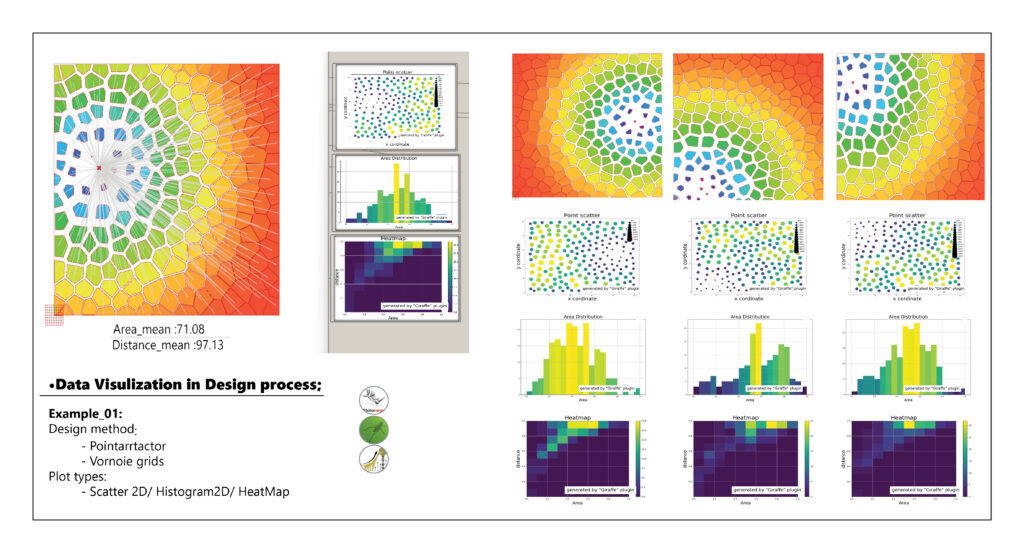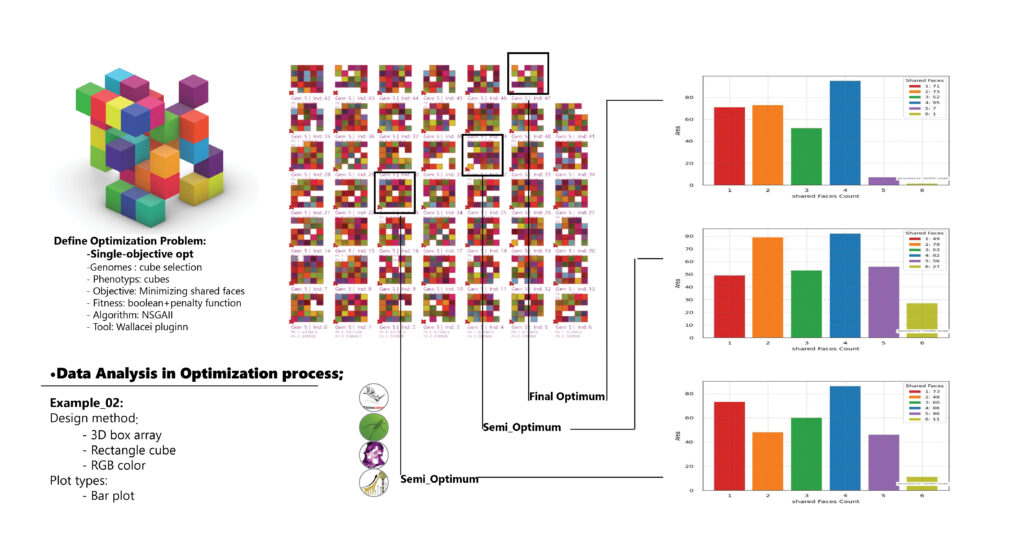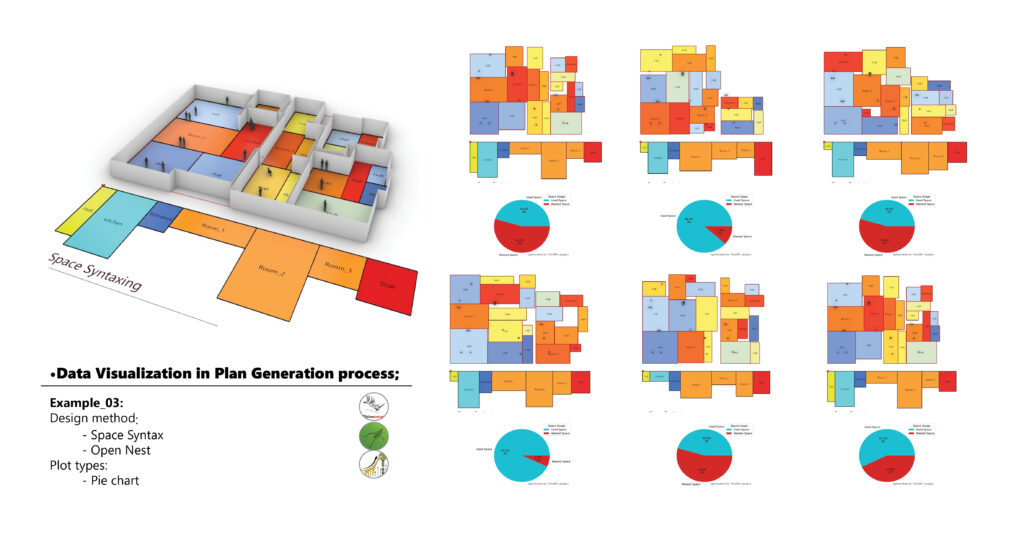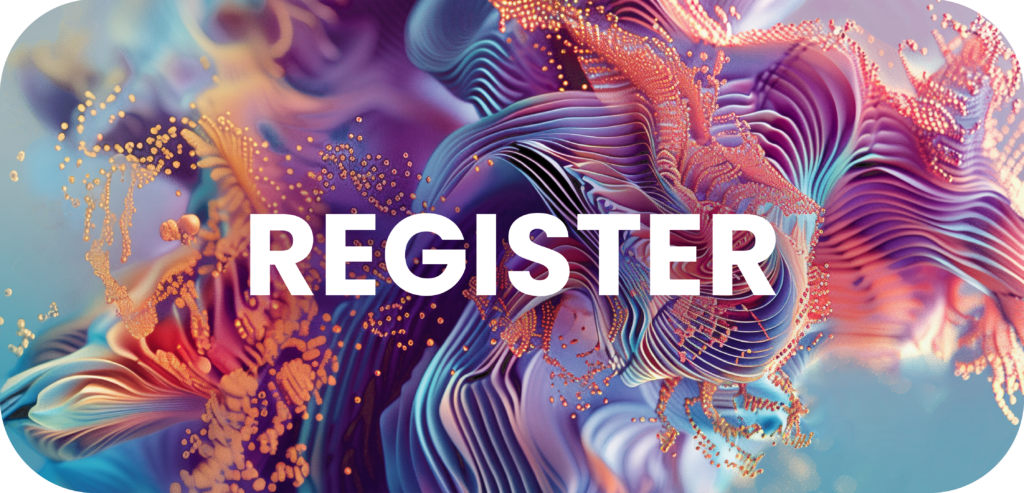Decoding the Black Box: Optimization and Data Management in Architectural Design Process
Instructors: Ghazal Javidannia / Mahdiyar Esmail BeIgi / Giraffe team
Dates: 24 July – 26 July / 04:00 – 07:00 (GMT -3:30)
Themes: Interactive Design / Computational Design / Data Visualization,
Software:
Rhinoceros3D V8 for windows / Lunchbox / Wallacei / Biomorpher / Giraffe
(the installation file will delivered to the participants in the workshop)
Number of Students: 50
Workshop registration open until filled

Description:
This workshop aims to provide a deep dive into the world of architectural optimization, using advanced Grasshopper techniques to bridge the gap between performance-based design and architectural form aesthetics. This workshop is not just about numerical optimization; it is about generative design exploration, where the optimization helps designers to extract design information, understand the design implications related to building performance, and synthesize the information into the ideation and conceptual development process
Session 1: Unveiling Optimization Algorithms
In our first session, we introduce a variety of optimization algorithms within Grasshopper, including genetic algorithms, swarm intelligence, and surrogate models. We then delve deep into Genetic Algorithms (GAs), elucidating fundamental concepts such as population, generation, crossover, mutation, fitness function, design space, and solution space. We will tackle both single-objective and multi-objective optimization problems, using tools like Galapagos, Wallacei, and Biomorpher. Participants will engage with these tools through practical exercises, learning to apply these algorithms to optimize architectural designs based on performance metrics. By the end of this session, we address a pivotal question: When optimizing forms based on performance metrics such as structure, daylight, view, and thermal heat, is the form geometry also optimized? We will explore the features and attributes of forms within the optimization landscape and Pareto front solutions.
Session 2: Mastering Data Management with Giraffe Plugin
Our second session shifts focus to data management, crucial for handling high-dimensional data in architectural optimization. We introduce Grasshopper’s first plotting-based data analysis plugin, Giraffe, which integrates Matplotlib’s powerful plotting capabilities directly into Grasshopper. This enables seamless visualization of data and design outputs within Rhino’s computational design environment. We will explore various chart types, including 2D and 3D plots, and demonstrate their generation, application, and significance in the design process.
Participants will gain a thorough understanding of how to store, read, and manage complex data, and how to utilize the Giraffe plugin to visualize and analyze their optimization results effectively.
Session 3: Hands-On Practice and Optimization Decoding
The third session is dedicated to hands-on practice. Participants will tackle multiple optimization problems, applying the concepts and tools learned in the previous sessions. We will decode the optimization processes and results, leveraging the Giraffe plugin for data management and visualization. This session encourages participants to run optimizations on various examples, applying their newfound skills to manage data and interpret final results. This practical approach ensures that participants not only understand the theoretical aspects of optimization but also gain the confidence to apply these techniques to real-world architectural design challenges.
Conclusion: Bridging Performance and Aesthetics
By the end of this workshop, participants will have a comprehensive understanding of how to use advanced optimization algorithms within Grasshopper, manage high-dimensional data, and visualize optimization results. They will be equipped to explore the intersection of performance metrics and form geometry, ensuring that their architectural designs are not only optimized for performance but also exhibit the desired aesthetic qualities.


Learning Objectives :
This workshop is designed for architects, designers, and computational enthusiasts who are interested in deepening their understanding of optimization algorithms within the Grasshopper environment. This workshop will provide an in-depth exploration of various optimization techniques, followed by a comprehensive session on data management and post-optimization analysis. The ultimate goal is to equip participants with the knowledge and tools necessary to not only achieve optimal performance outcomes but also to appreciate and evaluate the architectural form attributes of semi-optimal solutions.
One of the critical challenges this workshop will address is the disconnect between optimized performance and architectural form attributes. You will explore the importance of accessing and evaluating form attributes in optimization results and learn about data management techniques that underlie the optimization process. This knowledge will enable you to better understand and evaluate your optimization outcomes.
Additionally, participants will be introduced to Giraffe, a powerful Grasshopper plugin designed for data manipulation and management. You will learn how to use Giraffe to manage your optimization processes effectively, visualize optimization results, and compare optimum results in terms of performance with semi-optimums based on form aesthetics.
This workshop is designed for architects, designers, and students with a basic understanding of Grasshopper who are interested in exploring advanced optimization techniques for architectural design. By the end of the workshop, you will have the knowledge and skills to harness the full potential of optimization algorithms in your architectural designs, creating optimized structures that also meet your aesthetic goals.
Workshop Objectives
1.Introduce Optimization Algorithms: Explore genetic algorithms, differential programming, swarm intelligence, and surrogate models within Grasshopper.
2.Highlight Performance vs. Form Attributes: Understand the distinction between optimizing for performance and evaluating architectural form attributes.
3.Data Management and Analysis: Learn the underlying data management processes essential for interpreting optimization results.
4.Practical Application with Giraffe: Introduce and demonstrate the Giraffe plugin for Grasshopper, showing participants how to manage their optimization processes and visualize results effectively.
– All modeling and computational analysis will be done in the grasshopper/RhinoV8. Having beginner to intermediate knowledge of grasshopper is a must. No previous knowledge of optimization or data management is needed.
Detail Schedule :
Module 1 – Wednesday 24th of July I 04:00-07:00 (GMT – 3:30)
Module 2 – Thursday 25th of July I 04:00-07:00 (GMT – 3:30)
Module 3 – Friday 26th of July I 04:00-07:00 (GMT – 3:30)

Ghazal Javidan :
She is a Computational Design Architect specializing in optimization algorithms and AI generative design. She combines computational design and optimization methods to create integrated architectural solutions, focusing on building structures, envelopes, and environmental systems. She holds a Ph.D. from TMU University of Tehran and was previously a researcher at Eindhoven Technology University. Ghazal currently collaborates with international design studios in Dubai, UAE to develop cutting-edge concepts and digital fabrication data-management using parametric design, simulation, and AI algorithms. Additionally, she is involved in teaching international workshops, mentoring, and advising Ph.D. and Master’s students globally.

Mahdiyar Esmail beigi:
Mahdiyar holds a master’s degree in architecture and is currently a PhD student in this field. With over 12 years of experience using Rhino and Grasshopper, he has developed a deep expertise in these software tools. In 2015, he released his first plugin, Grasshopper Launcher. Since then, he has developed and published several plugins for Rhino and Grasshopper, which might be of interest: Javid, Kampecaris for GH2, Euglena, Planthopper, PersianCat, Seal and IAC. He has been an active lecturer and developer, contributing significantly to architecture and computational design.

Giraffe Team :
The team consists of experts in computational design, architecture, graphics, and urban design, will support the workshop showcasing practical applications across various disciplines. They will provide in-depth examples and demonstrate multidisciplinary techniques to utilize Giraffe for sophisticated data statistical analysis and visualization, offering participants a unique opportunity to enhance their data handling skills with this cutting-edge tools.


